Department of Management Information Systems and Data Science Institute
A for Effort? Using the Crowd to Identify Moral Hazard in NYC Restaurant Hygiene Inspections
by
Anandasivam Gopal
Dean’s Professor of Information Systems
Robert H. Smith School of Business, University of Maryland
Friday, October 5, 2018
10:30 AM – noon
Fred Fox Boardroom (Alter 378)
Abstract
From an upset stomach to a life-threatening foodborne illness, getting sick is all too common after eating in restaurants. While health inspection programs are designed to protect consumers, such inspections typically occur at wide intervals of time, allowing restaurant hygiene to remain unmonitored in the interim periods. Information provided in online reviews may be effectively used in these interim periods to gauge restaurant hygiene. In this paper, we provide evidence for how information from online reviews of restaurants can be effectively used to identify cases of hygiene violations in restaurants, even after the restaurant has been inspected and certified. We use data from restaurant hygiene inspections in New York City from the launch of an inspection program from 2010 to 2016, and combine this data with online reviews for the same set of restaurants. Using supervised machine learning techniques, we then create a hygiene dictionary specifically crafted to identify hygiene-related concerns, and use it to identify systematic instances of moral hazard, wherein restaurants with positive hygiene inspection scores are seen to regress in their hygiene maintenance within 90 days of receiving the inspection scores. To the extent that social media provides some visibility into the hygiene practices of restaurants, we argue that the effects of information asymmetry that lead to moral hazard may be partially mitigated in this context. Based on our work, we also provide strategies for how cities and policy-makers may design effective restaurant inspection programs, through a combination of traditional inspections and the appropriate use of social media.
